Sunsetting Rise
After more than four years of working on Rise, we’ve made the difficult decision to shut down the company and product.
We’re incredibly sad that the adventure for Rise ends here, and we can imagine this news hits you hard as well. While we’ve made significant progress towards our goals over the last year, we were not able to gain enough traction to build a sustainable company or raise fresh funding to continue working on Rise.
We’ll keep Rise running until March 31st, 2025. We made it easy to export all of your tasks and projects to preserve them and move them over to a different product on our export page.
After March 31st you will no longer be able to access Rise and we will completely erase all your projects and tasks, and we will delete our local copy of your calendars and events. They will obviously remain at Google Calendar or Outlook.
If you have a running subscription, we’ll cancel it for you. If you have an annual subscription, we’ll refund the unused part. You'll be able to use Rise for free in the next two months.
If you have any questions or if you are running into any issues, feel free to reach out to [email protected].
We want to thank everyone that helped us build this company and product over the last years—we owe so much to the thousands of users who shared their feedback and suggestions, and Early Risers that put up with the countless bugs they discovered. It’s a delight to build for such passionate users who rely on a product every day and it truly raised the bar.
The inside of any startup is messy, but the polished story is usually what you’ll get. We think there’s value in sharing the reality behind the scenes—the highs, the lows, and everything in between. That’s why we decided to pull back the curtain and tell the full story of our journey: what we tried, what we learned, and ultimately, why we’re shutting down. Therapeutic for us, and possibly helpful to you.
Rise was a lot more than a job to us. We got a chance to build a product we used ourselves every single day, together with an amazing community. We’ll miss all of it, from the tiniest details in the product to the collection of inside jokes we’ve built up over the years. Knowing that everything we created together will cease to exist is a tough reality to accept—and it truly hurts.
Making Rise work as a company always meant offering something of value to teams. And while we made significant progress in the last year, it was not enough to be sustainable, and not enough to allow us raising a new funding round. This is why we had to make the difficult decision to sunset Rise.
Building a calendar that helps have more time for important things
Let’s rewind to December 2020. After helping the Dutch government set up the Covid Tracing app—used by millions to combat the pandemic—Emiel and I reconnected and started working on Rise. We had known each other from a previous startup, Blendle, and we both felt drawn to tools for the workplace. Willem joined shortly after; I knew him from the Amsterdam startup scene, where he was one of the first employees at Uber’s Dutch office.
I’ve always been fascinated by how people work. That fascination led me to write GRIP, a book that turned my insights and methods into a framework. When it launched in 2019, it became an instant bestseller. By 2020 I had spent years collecting user feedback on productivity tools, which helped us shape our thesis: managing time well unlocks massive impact.
The calendar, we realized, is the ideal form factor for this. Unlike overflowing inboxes and endless to-do lists, the calendar is finite. And that limitation? It’s a feature, not a bug. It provides the boundaries we need to focus on what truly matters.
So we got to work: sketching, writing, building and testing.
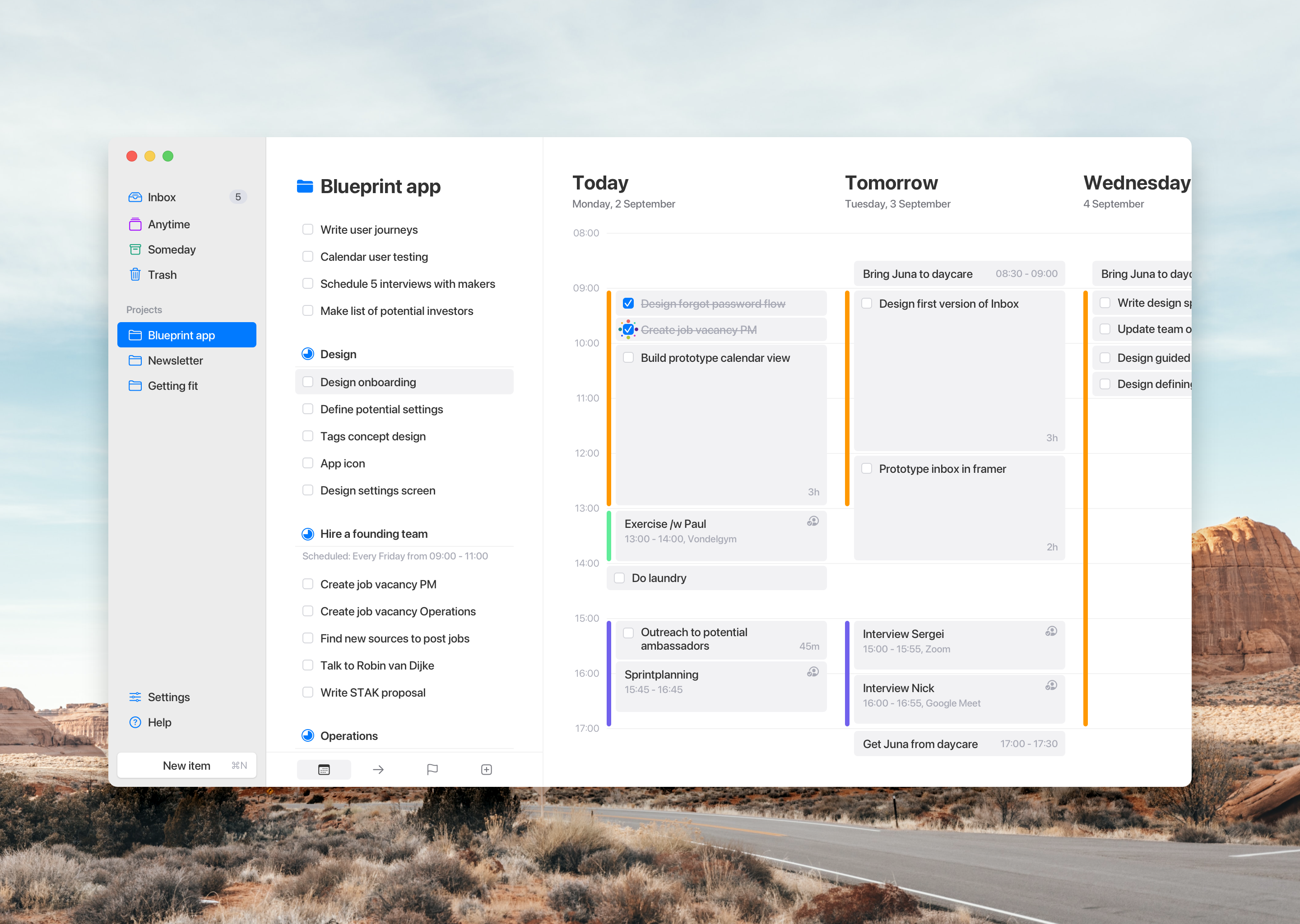 One of the earliest Rise designs Emiel made in 2020.
One of the earliest Rise designs Emiel made in 2020.
We spent the summer of 2021 building our reports feature. Rise would read and analyze schedules to figure out how a team spends their time. And it would scan for fragmentation: pockets of time that could be optimized. As a next step, we would apply our scheduling engine, virtually. We would guess which meetings would be ok to move around, and draft an optimal schedule for everyone. Obviously all without actually making those changes. We would then take a snapshot of the data before and after our suggestions, and build a report out of that.
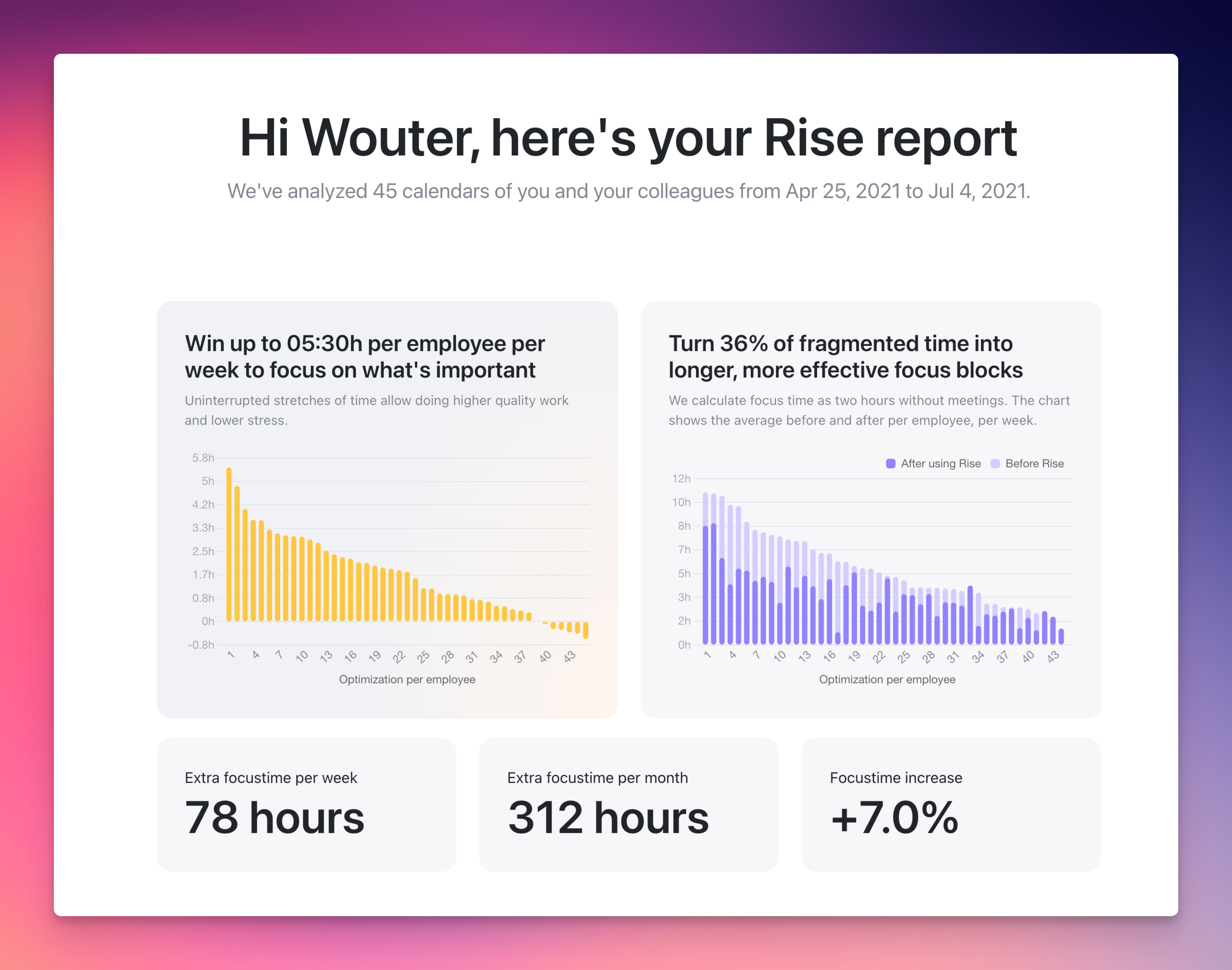 An example of the reports we would generate, highlighting the difference in focus time per team member.
An example of the reports we would generate, highlighting the difference in focus time per team member.
Based on all our data, almost anyone who works in an office has issues with their schedules. There are usually a few people that have their schedules filled back to back. Mostly founders and managers. And around those busy people there’s the rest with only a handful of meetings. That large group is also the group where one strategically placed meeting can waste a complete morning or afternoon. You might recognize this: a meeting at 10am or at 3pm leads to pockets of time before and after where tackling anything big is near impossible.
We had evidence that we could reclaim hundreds of hours. That struck a nerve. When we would pitch it to leaders and CEOs, they would instantly see the value. Especially because our data would show exactly how many hours we would win back, resulting in more unbroken stretches of time for the team to do meaningful work. Imagine what you can do with that, for the fraction of the cost of adding another person to the team.
All throughout 2021 we kept iterating on those reports, as well as expanding our proof of concept calendar to include features to turn the outcome of the report into reality. We built “Find a time”, a feature to help lock in a slot that works best, and added ratings and inline suggestions into the calendar. And towards the end of the year we managed to use that progress to team up with Lachy Groom, Stewart Butterfield, Adriaan Mol and a long list of our favorite friends and entrepreneurs to raise our pre-seed funding round of €2.5M. An amazing milestone.
Until then we funded ourselves, but now we could use that money to start expanding the team. This also meant that the clock started to tick for us. We needed to start delivering on our promise.
Delivering on our promise by being the destination calendar
With our funding we could hire a bunch of amazing people, and with them we spent most of 2022 to work on features to deliver on the promise of that additional focus time. We shifted from “Find a time” and in app ratings and suggestions towards features that would help optimize time autonomously. When you’re busy, you’re not going to go in and look at red flags in any app. So we launched FocusGuard, which automatically blocks off time if you’re getting overloaded. And we worked on a feature we initially called Autopilot. The idea behind it was simple and elegant: give us some wiggle room for some of your events, and we’ll make sure they are optimized without needing your attention or approval.
It is really hard to optimize if you only have access to one individual schedule. Think of it like those 4x4 sliding puzzles where you have to move one piece to make space for another. We needed as many teammembers on Rise as possible to unlock real impact.
To get everyone on board, we needed Rise to work flawlessly. We always believed that in order to build trust, we needed to own the calendar canvas and build from there. Around us there were a lot of different products trying to solve the same issue. Clockwise does this really well and managed to build a great business out of it, for example. Reclaim was great too and since got acquired by Dropbox. But their approach was more disconnected from the calendar, running a separate interface or offering their product as a browser plugin. This saves a lot of time building a calendar, but we felt that this was our unique angle that would help introduce this new way of scheduling. Especially for people that are slighly less technical.
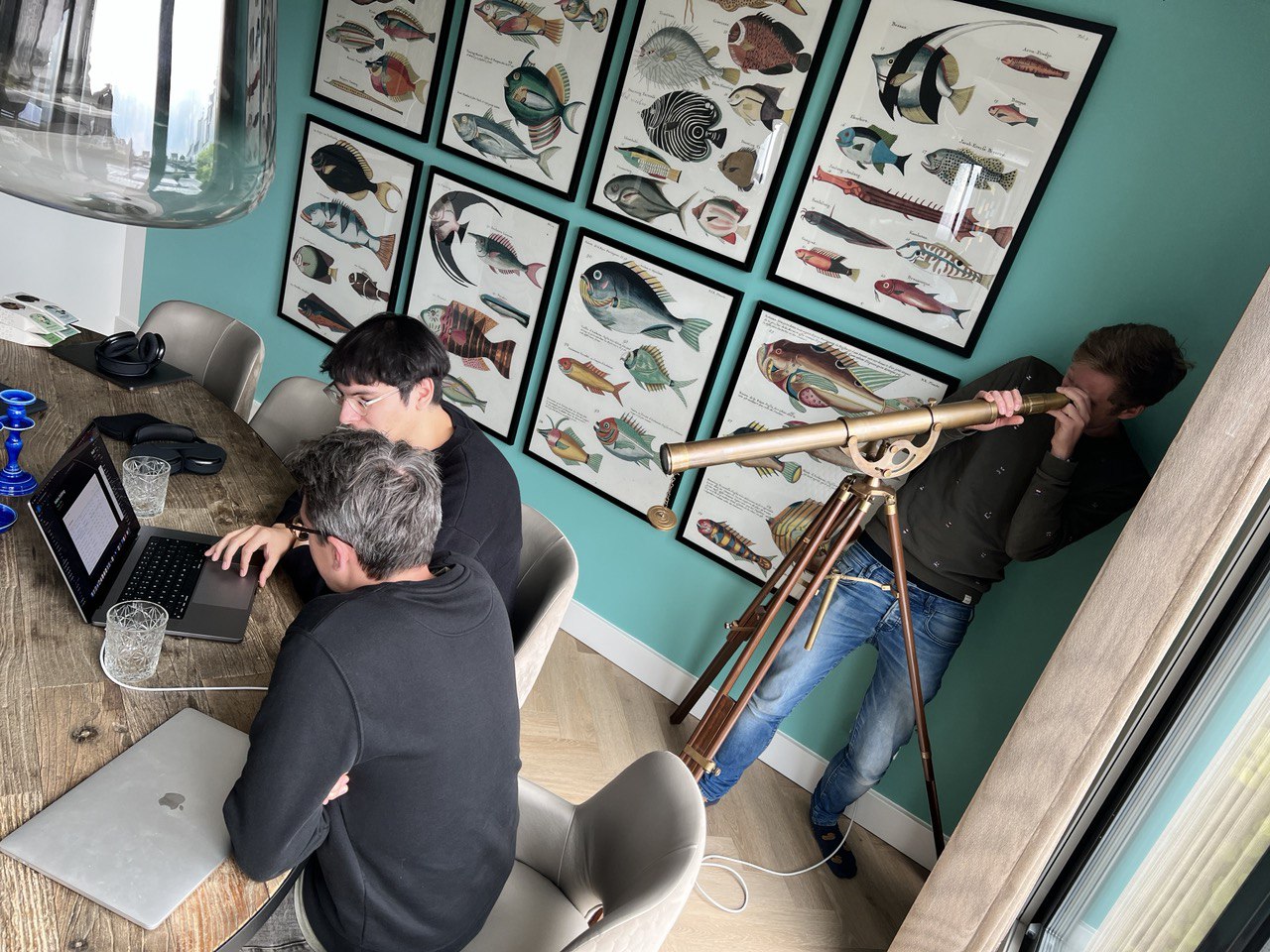 Checking in on what Emiel and Dany were cooking at the first Rise onsite.
Checking in on what Emiel and Dany were cooking at the first Rise onsite.
Claiming the canvas and becoming the destination calendar is a huge task in itself. Even before we started, people would warn us of the complications. We were just boneheaded enough that we ignored all of them and pushed on. We wanted both the calendar and introduce much needed innovations on top.
While we were busy iterating on those scheduling features, we were working on synchronizing calendars with Google, Outlook and iCloud, building deep integrations with Windows and MacOS, rolling out apps for iOS and Android, building features like working locations, out of office events, alerts, attachments and so many more of those seemingly small things that you just expect from a calendar. Just on the topic of recurring events we could fill a book. And on top of all that, we introduced features to delight the user: extensive keyboard command, horizontal scrolling, smart color-coding, auto-join and dozens of other bits that make using Rise so nice.
Was rebuilding the calendar a smart strategy? It definitely was a lot of work to get it all right. There was always another feature that users were saying was holding them back from switching to Rise. And, what didn’t help, we happened to land into a cohort of other brilliant calendars, lead by amazing founders: Cron launched in beta in 2021 and ultimately got acquired by Notion in 2022. Cron did not focus on all the smart stuff we tried tackling, but simply focused on building an amazing calendar. Amie was making splashes since 2020. People loved their playful design and merging of tasks with the calendar. Both teams with incredible eye for detail and both introducing yet another layer of features that now belong to the baseline of what users expect. Oh and Google Calendar finally started to launch improvements, like working locations, focus time and scheduling links, in 2021 as well. In hindsight, we think doing both big things at the same time didn’t help us focus and delayed our insights specifically on the focus time generating features and team angle.
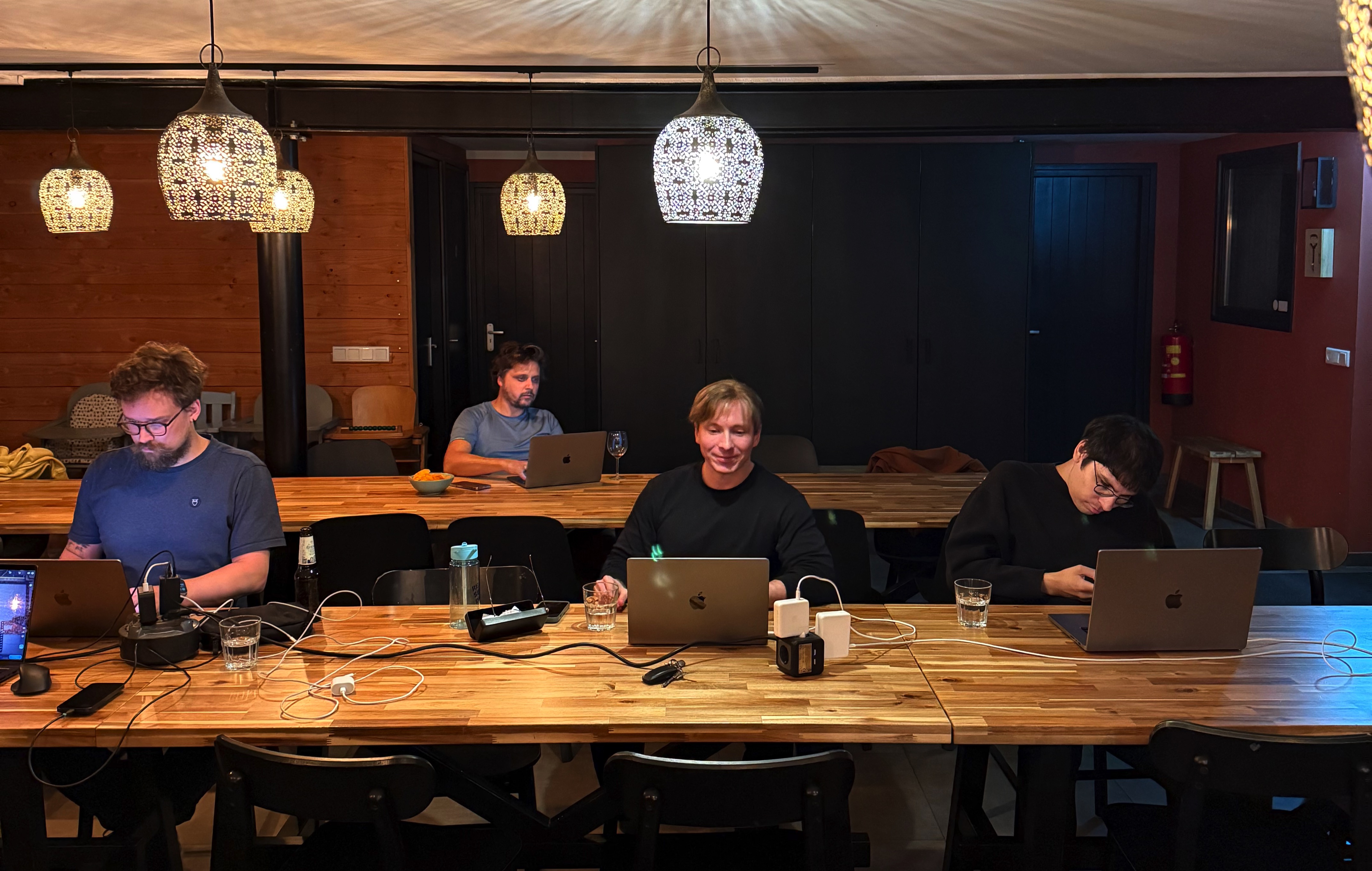 Fixing an endless list of bugs at our last onsite, which we dubbed the Sevenum Solving Sessions.
Fixing an endless list of bugs at our last onsite, which we dubbed the Sevenum Solving Sessions.
Iterating on Flexible events in 2022 and 2023
All throughout 2022 and 2023 we worked on rolling out and refining Flexible events. While back in 2021 a lot of people would be working remotely, in 2022 that all changed, so we had to implement features like support for meeting rooms to make Rise compatible. Some teams were distributed over different timezones, so we had to make sure that all worked well. And whenever we would introduce Rise, we would get a ton of feedback about reasons why the calendar itself was not yet good enough: one absolutely relied on having a monthview, someone else optional attendees, another couldn't switch without support for custom colors.
At the same time, we kept iterating on how we would optimize schedules. We implemented multiple variants of our onboarding and spent a lot of time on crafting emails, including building something that would render our calendar on the server and save a screenshot of that to visually show the impact of Rise in an email. All to improve our communication around what the scheduling engine had done. We implemented priority support for resolving calendar conflicts and built suggestions in the product including previews of those moves.
When we rolled out Flexible events in the fall of 2022, we only had a handful of teams using it, and while they were somewhat excited, they ran into issues too. But we pushed on, making it clearer which changes Rise made and which we did not, and reducing the number of changes that would not lead to a significant improvement.
Early 2023, we finally invited our waitlist for Rise and we did that while we were on our third team onsite, which was really nice. The list was holding a few thousand users that were hoping to get access, and focused on stability of the product in the first quarter. In the second quarter we expanded Flexible events with broader options for rescheduling, and in the third quarter Daniel implemented TimeFold. TimeFold is a solver which considers thousands of possible solutions and figures out the best option, which would dramatically improve how many minutes we would optimize and how many conflicts we would be able to resolve.
But all the time, the feedback was pretty disheartening: ranging from ‘we do not really notice Rise having a positive impact’, to ‘people find Rise really annoying’. People associated Rise with any issue in their calendars and they would not even notice the problems we tackled for them. They would blame us for any last minute change (which we would never do) or calendar conflict (that we would never create, but also could not always resolve). This marked a period where we started to doubt our direction. In the last quarter of 2023 we did a last, final push to resolve some of those issues with a project called Friendly Flex. We would dramatically reduce the number of changes, we would update events to make them say we would no longer move them and we added much more visibility on what happened to the app.
It didn’t matter. Users didn’t stick and would gradually disable Flexible events over time. So after all this time, we decided that it was a dead end. We still had a handful of people that deeply loved the feature. We relied on it ourselves every day. Flexible events even lead to our first paying team. But we also never saw it have the viral effect we hoped it had. If anything, it had the opposite effect: people would associate Rise with any bad change in their schedules and with chaos rather than improvement. So we decided to pull the plug as we were planning 2024.
Could we have figured that out faster? Without spending so much time building unrelated but blocking calendar features? Probably. And we probably could have pulled the plug earlier. But in building products, there’s always something else too: conviction. Where a collection of small adjustments and details can make the difference between adoption or rejection. A lot of digital products simply suck, even though the core idea makes sense. Execution is everything, but we definitely didn’t pick the easiest combination of things that needed to be build to validate. And while it’s not easy to give up on something you believe in, it’s also not easy to go the extra mile and this part made us really proud.
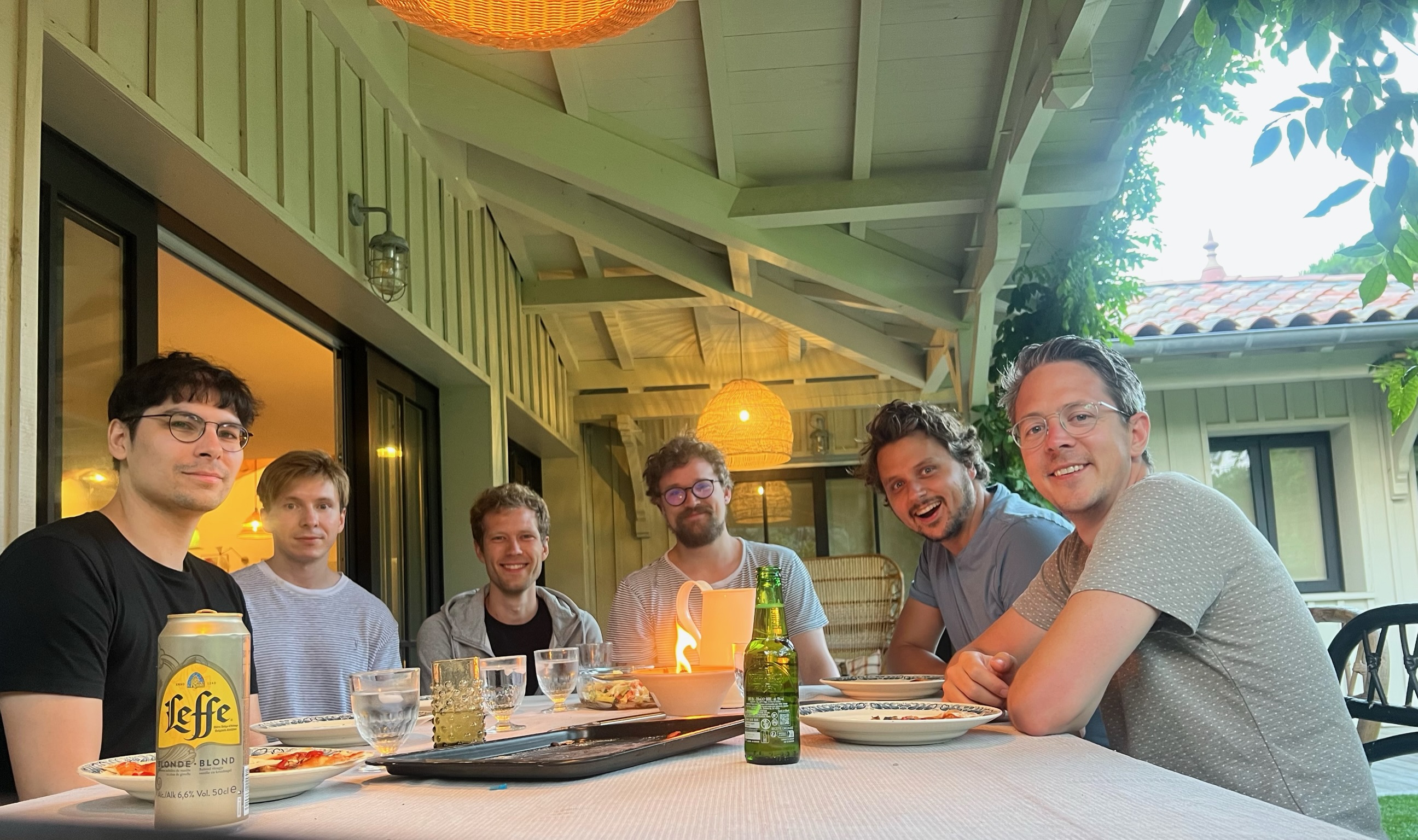 In 2023 we had a wonderful onsite in France which we turned into a hackathon.
In 2023 we had a wonderful onsite in France which we turned into a hackathon.
2024: launching Projects with our best traction so far
After deciding that Flexible events were not working, we had to decide on what to do instead. We had one big thing on our minds: tasks. Since the earliest days, we wanted to play with a deeper integration managing tasks inside the calendar. It is one thing to help people have more time, but the second challenge comes right after: how do you spend that newly regained space? And if we could get the combination to work, by folding scheduling and task management in one it would mean one less tool to worry about.
Very early on we added a small hack to Rise: if you would use [] at the start of your event title, we would turn that into a clickable checkbox in your calendar. This small feature was something users loved. The biggest doubt we had: can we turn that into a product teams would pay for? Getting a bunch of individual users to use a product like that is not crazy hard, because there’s a special group of people that is always looking for new tools like that. We wanted to not make the same mistake as with Flexible events, so we wanted some proof first.
We started lining up teams that would be willing to switch to Rise for their projects. We pitched a set of features and had them commit to an experiment. And while we got to something pretty cool really fast, it took us the first half of 2024 to get to something we could start to sell to teams.
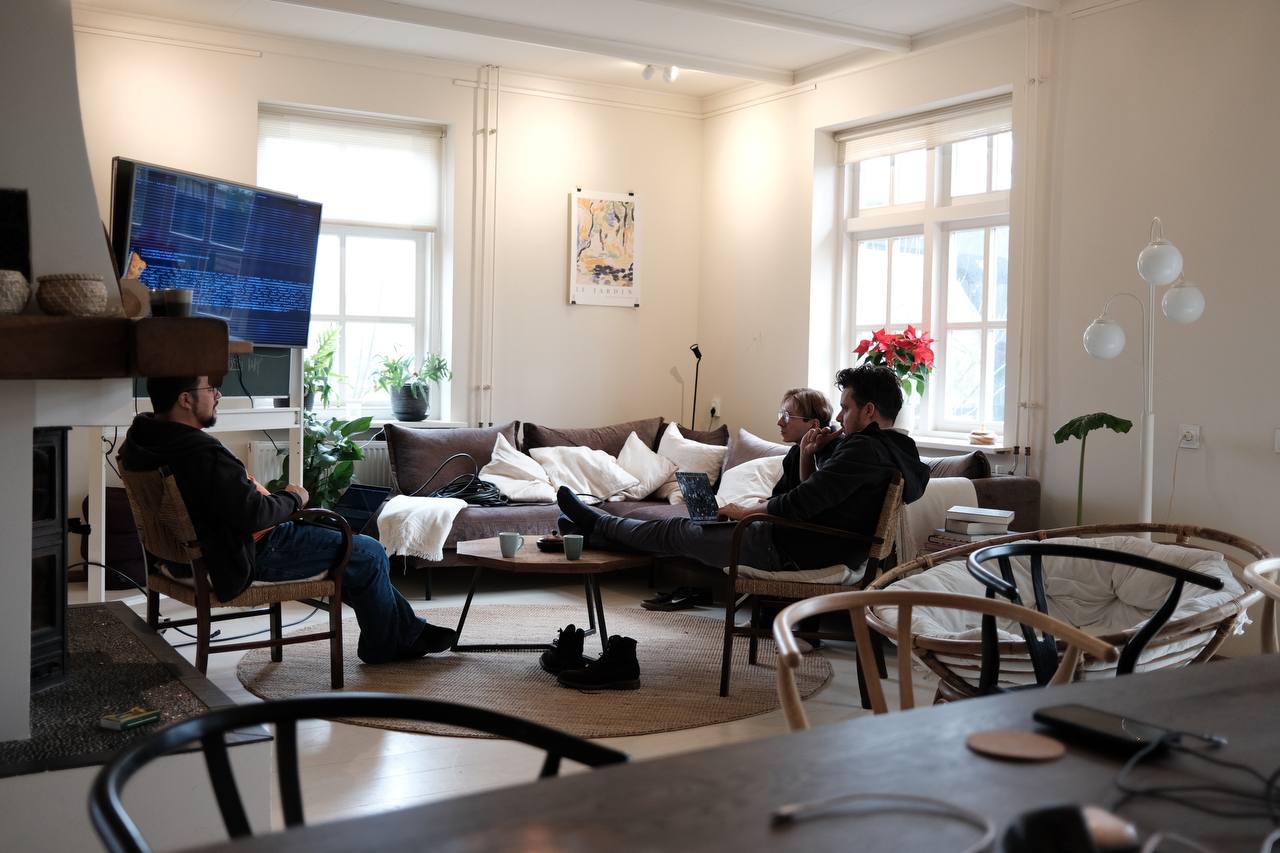 Backenders scheming to get our Oulook integration out the door.
Backenders scheming to get our Oulook integration out the door.
Turns out that people have a hard time considering all the different ways they use their existing project manager. What started as a simple project manager quickly turned into a lot of work. We implemented subtasks, recurring tasks, attachments, notifications, archiving, comments, reactions and so on. In terms of complexity those items are relatively straightforward compared to working on the calendar, but it still is just a lot of work. This took us a few more precious months.
In May we had our next team onsite. We shipped our iOS and Android app. And we launched the public beta of Projects. We also opened up our Outlook beta, and all of these together were really well received. We never had this level of growth and activity before, especially from individual users. Our retention doubled for users that would start using tasks in Rise. But while we also had some initial success from teams trying Rise, that didn’t go as fast as we hoped.
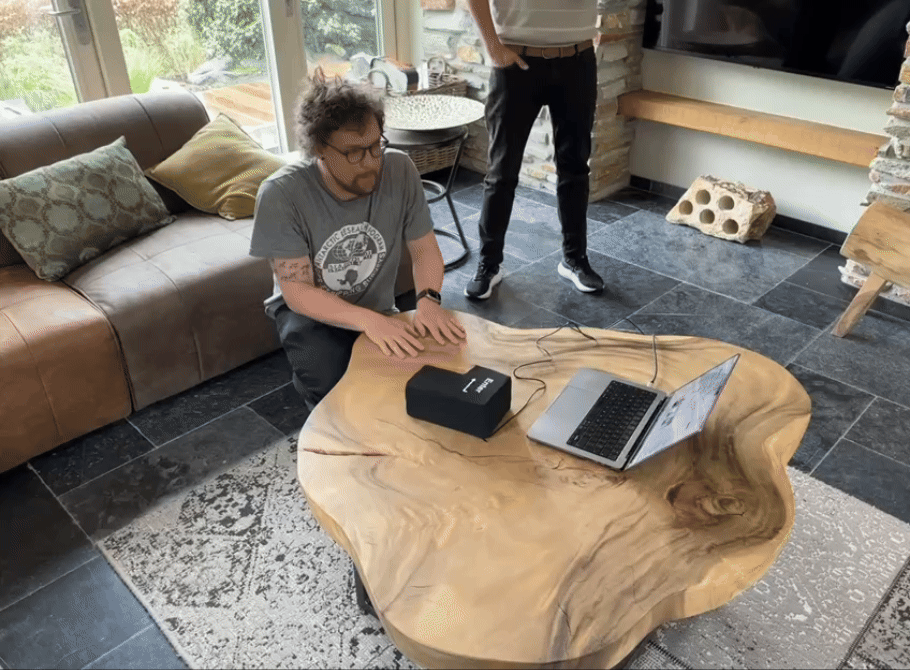 Tim launching the iOS app by slamming a large physical enter key at our team onsite.
Tim launching the iOS app by slamming a large physical enter key at our team onsite.
We spent the third quarter doing a ton of different things: incentivizing growth and doing a lot of manual outreach to help teams make the switch, next to introducing tools to help import projects and tasks from existing products. And while teams were definitely open to consider, we once again were competing against amazing products. A lot of our users are using Linear at work. A product we love ourselves and really didn’t want to compete with. And on the more generic project management side of things, almost all our users used Notion. And people already invested hundreds of hours setting it up. With the addition of Notion Calendar, the offering became even better. Those are two amazing teams which everyone should be fearful of.
Where it took us almost two years for the calendar to be mature enough to adopt it broadly, doing that for projects in just a few months was always going to be hard. But we overestimated what we could do in a few months and missed the mark on seeing the scope of the bare minimum required.
We ultimately had around 900 teams in various stages of growth in terms of team members and tasks, which we think is really impressive. But only a handful would switch tools and start to pay for Rise.
Still, there was some silver lining: towards September and thanks to our sales efforts, we had a bunch of larger teams in sights that were transitioning into Rise. Especially teams that were now using Trello, Asana or Monday were great candidates. Our deep calendar integration was a big win for them. If we could double down on that group, we saw a way out. But for us to be able to do that, our current runway would not cut it. We would need a bit of extra money to break through the noise and scale up our sales efforts.
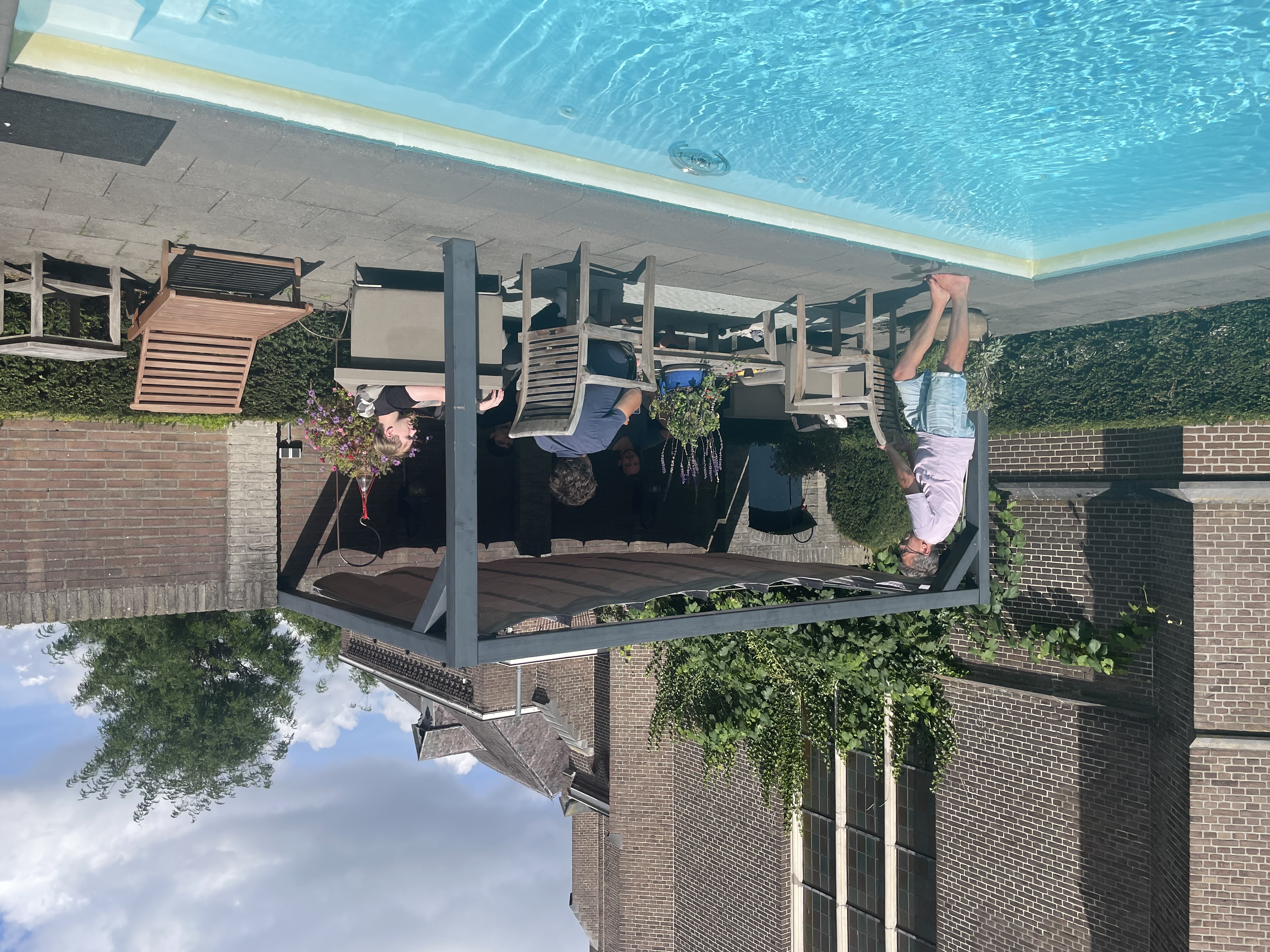 Poolside meeting, September 2022.
Poolside meeting, September 2022.
Fundraising while being in the ‘death zone’
As we headed into the last quarter of 2024, we pulled together everything we had: a few thousand users, a pipeline filled with a few hundred teams and roughly 30% month over month growth in terms of paying teams. Thanks to a ton of help from our existing investors, we spoke with around 80 VC funds. We traveled to London and Berlin to do an in-person series of meetings, which was a first for us since we raised our first round during Covid. There we started to run into issues. With our metrics we landed right into the ‘death zone’. If you don’t have anything to show for you can simply focus on the story and vision, which is basically the left side of the zone. On the right you clearly present hypergrowth on at least one metric, to prove things are taking off. That could be free user growth, team retention or revenue. We were right in between those two: we did have early revenue and traction, but none of those were particularly strong. We knew that, but hoped to find at least one believer and did pitch after pitch for weeks in a row to keep the company alive.
Sadly and as you now know, this did not lead to a happy ending. There was no VC that saw the same potential. For every meeting there would be another rejection landing in our inboxes, with roughly the same messaging: great product, great vision, but lack of commercial traction in a highly competitive space. It also didn’t help we were four years in and didn’t clearly show that we were able to aggressively grow and sell the product. Although this felt slightly unfair given our progress in the last year, we could obviously see that from a distance there’s some truth to that.
We took some time off around Christmas to recharge and reflect. And when we got back together in January it was clear that we would not be able to raise a follow up round, or even a small bridge. So we were ready to move to the next best thing: finding a destination for Rise.
Historically, we always have had interest from others to acquire the team and product. So we shifted gears into seeing if there was interest in making that happen. When listing our wishes, Willem and I concluded: if there’s some other place where we could continue working on Rise with our all star team, we would be open to that.
After a few days we had around six promising options. We had the chance to sit down with amazing founders from all around Europe, but after exploring none of them would allow us to continue with Rise and none were interested in acquiring us. The remaining option would be to go for a so called acquihire, where we would stick together but work on something completely different. We ultimately didn’t feel there was one option we would want to dedicate the next few years of our careers to.
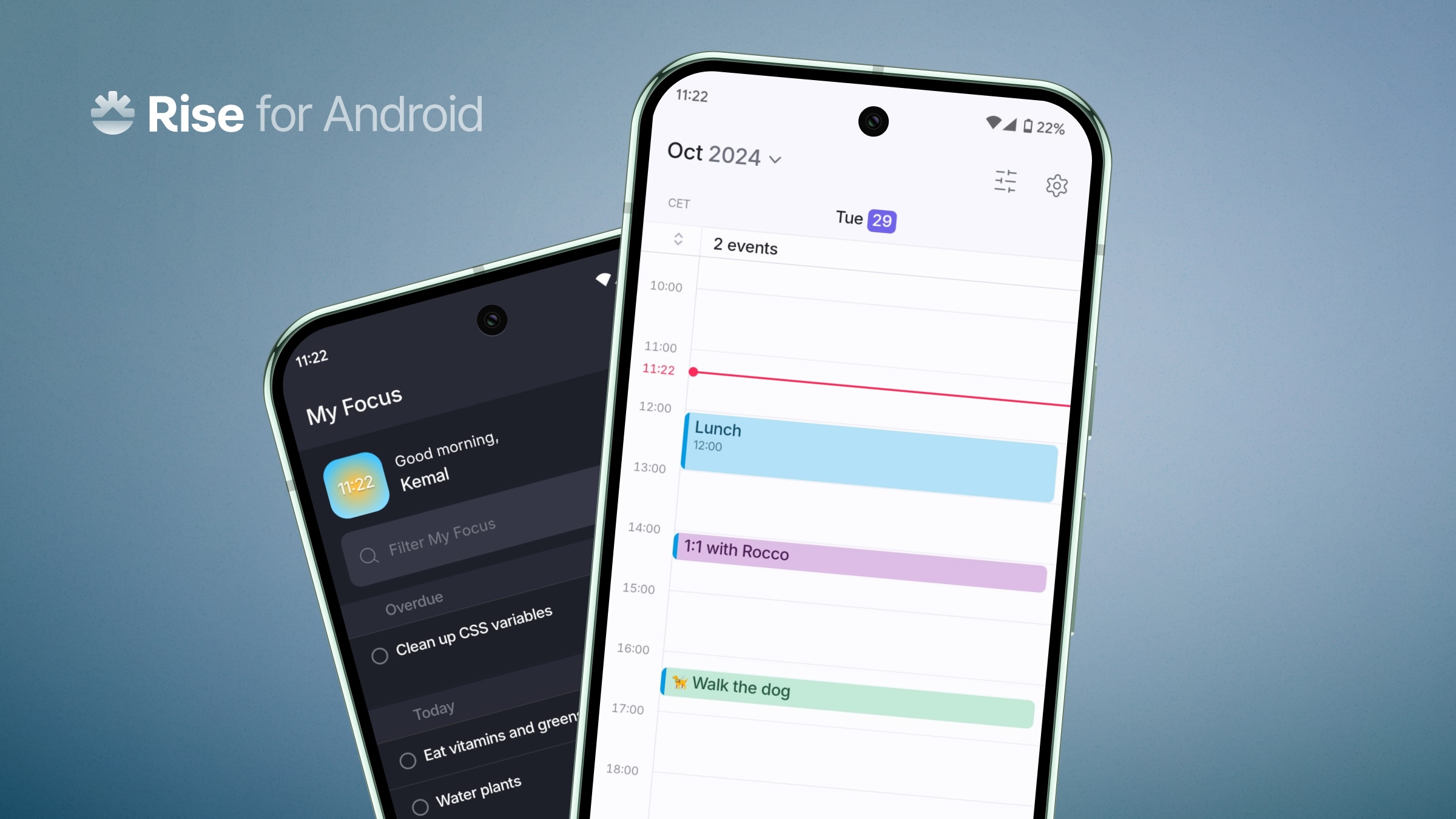 We used React Native which allowed us to ship great apps to both iOS and Android, really fast.
We used React Native which allowed us to ship great apps to both iOS and Android, really fast.
Why didn’t you just charge for Rise?
The one burning question you might have: why didn’t you just charge individual users for Rise? It obviously is one that we contemplated a lot, too. The first reason is one based on the fact that we always believed that in order to help teams, we needed to rely on individual users to bring us in. We wanted ‘Product Led Growth’. And we felt that free usage would put us in the best possible position to do so.
Towards the end we did consider charging, as a way to give us more time. But a few quick calculations removed that option from the table: even if all our active users (a few thousand) would start to pay for Rise, we wouldn’t even have enough to pay our four engineers, let alone cover all the other costs.
The only path left would have been to slim down the company to just Willem and me. We would live off our savings and gamble that we would be able to find a way to scale individual users (which was already hard with the six of us) or scale paying teams (which we knew would require significant sales and development effort). We would have to let go of the people we loved working with every day and invest our own savings into a tricky situation where we would have a slice of the capacity to do even more than before. It felt like a really solid way to burn ourselves up really fast.
So that’s where it ends for Rise. It is hard to believe all of this happened in just four years. And while it did not have the ending we hoped for, we all wouldn’t have missed it for the world.
If there’s anything that made us proud, it’s the team and the way of working we created. They made all of the above possible, and we had fun playing games over our virtual lunches and having wonderful times during our various offsites (or onsites as we called them, because our default as a fully distributed company is being offsite). We really couldn’t have gotten this far without this wonderful group:
Dany joined in 2021 and instantly started to transform our early frontend prototype into something truly amazing. Dany built rock solid components, blazing fast infinite scrolling, the prettiest calendar layout engine, powerful keyboard actions, dark mode, our drag and drop infrastructure, tooltips, popovers, panels. Well, too much to list here.
Daniel joined in 2021 too, and man he’s fast. We quickly renamed Daniel to SuperDaniel, and his usual response to things is ‘already done’. Daniel built and shipped our external scheduling feature over Christmas, he singlehandedly migrated our infrastructure from Heroku to Google Cloud without us noticing, he built a smart second version of our flexible events using an advanced scheduling product called Timefold and so many other things.
Tim joined in 2023 and he tackled a bunch of complicated projects in Rise, like a system to see the changes of your events before you save changes. But most importantly, Tim explored the different possible avenues for our mobile apps, picked React Native and then built Rise for iOS and Android from scratch, while making use of our shared code to dramatically speed up development.
Iain joined in 2023 too as our Ruby magician. As part of his onboarding he built a highly popular feature called cross-calendar blocking. He then focused on our Outlook integration before building almost all of the backend features required to ship projects and tasks in Rise, and improved our authentication stack. In the last year, Iain built integrations with Trello, Asana and Todoist, and to top it off he built a complete AI agents framework. In the last few months he built our iCloud integration that we unfortunately didn’t get to ship to our users.
There are two more folks that deserve a mention here: first Pepijn, who worked with us on tackling many issues around flexible events, and second Kemal, who joined as our designer in 2024 and designed the mobile app, everything around projects and also built us a brand new website and blog.
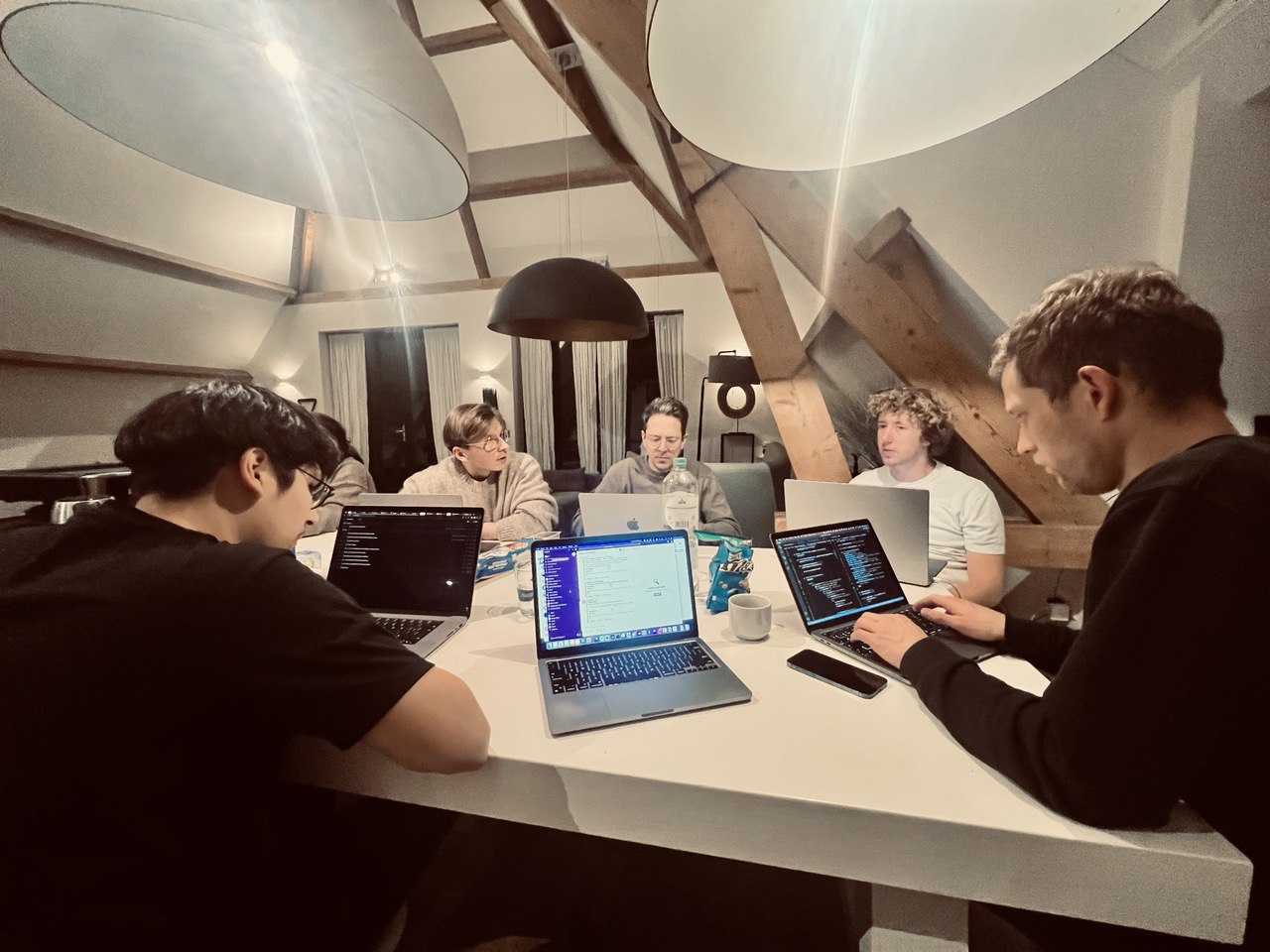 Hanging out with the team at one of the earlier onsites.
Hanging out with the team at one of the earlier onsites.
We started Rise with three founders. As we were contemplating where to go in 2024, Emiel made the tough decision that the direction didn’t resonate enough. And so we parted ways. While it is actually pretty common for startups to have a founder split at some point, that does not make it any easier. Emiel poured his heart and soul into Rise for years, and if it wasn’t for him we would never gotten to this point with Rise. We often had heated debates where two very different approaches collided: I’m someone who loves to meticulously plan out my time, build complicated task management setups and spend time setting goals. Emiel cannot be put into such structures and thrives on following his intuition which is often spot on. He doesn’t like too many bells and whistles and knows the majority of users feel the same. He challenged the things I thought were crucial. The combination often resulted in really cool ideas, that always centered around ‘automation over discipline’: let’s introduce features that do not require changing habits.
Even though we didn’t agree on a whole host of things, as founders the three of us really lifted the whole thing up. As a truly multidisciplinary founding team we were able to design and ship the MVP without needing outside funding. This is a huge advantage and we had a ton of fun in this phase of building Rise. Thank you, Emiel.
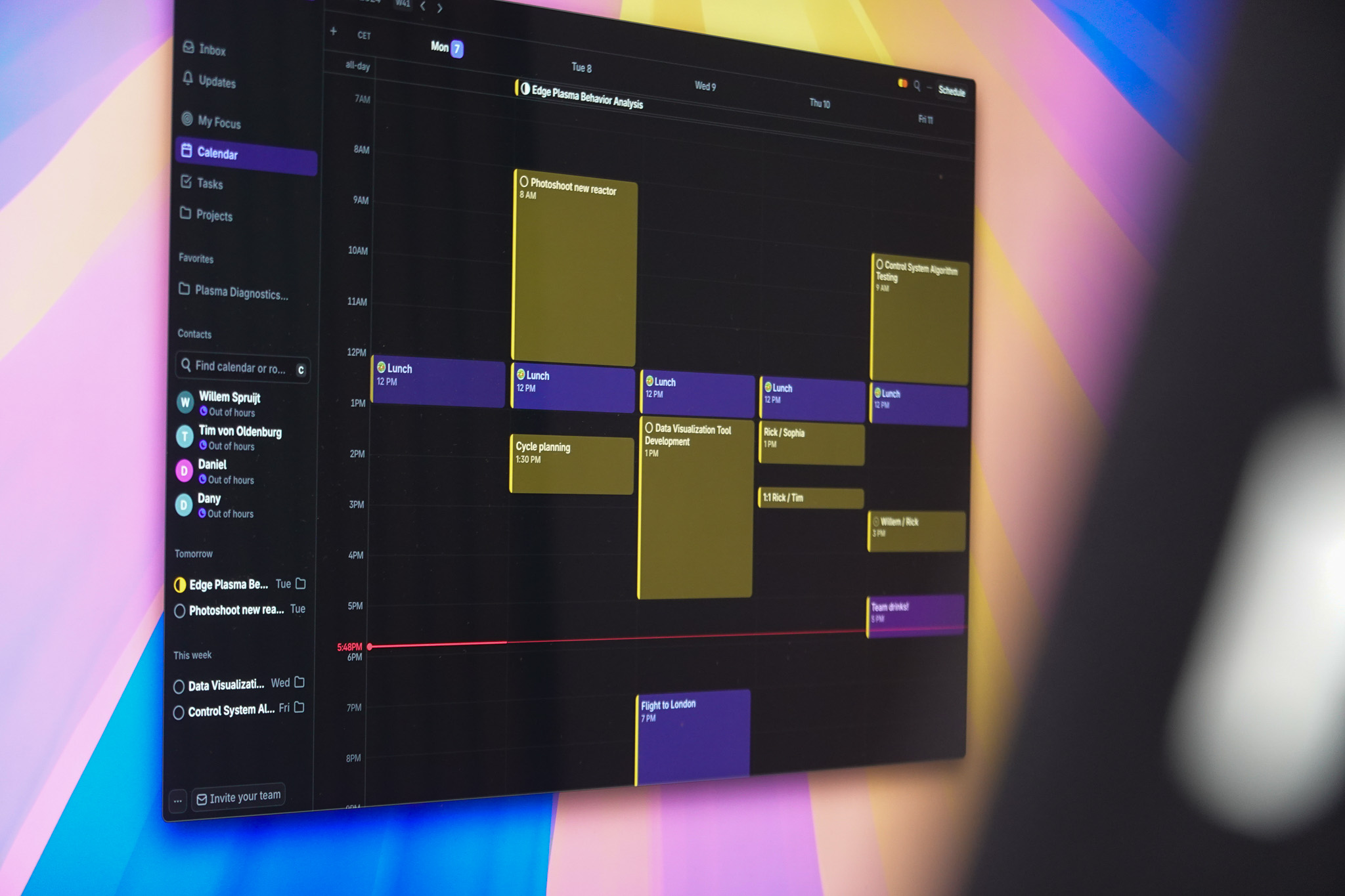 Rise combined tasks, projects and a full featured calendar in a beautiful package.
Rise combined tasks, projects and a full featured calendar in a beautiful package.
The future of tools for work
In the last few years, the way we think about work changed dramatically because of AI. By now we’ve all experienced the power of new tools to improve what we get done, and we’ve seen glimpses of things that have the potential to remove so much of the drudgery from our lives. At the same time, the number of tools we use every day is spinning out of control, and this sprawl of smart tools are causing information to be everywhere.
The two companies that are running our companies are still Google and Microsoft. And this continues to deeply frustrate me: our governments, our public infrastructure as well as almost every business rely on software by companies that fundamentally don’t seem to care about those products. And why should they? The majority of their revenue comes from Ads and Cloud. Instead, we’re getting flooded with prompts to enable their AI add ons that barely work, and come with a premium of hundreds of dollars on top of what you’re already paying. That’s the state of things.
It won’t be Rise that fixes this, unfortunately. But our hope is that there will be a company with a compelling vision for work. Like Stripe redefined the infrastructure for payments, there should be something similar for companies. That does not require reinventing the wheel. That helps reduce noise and adds focus. Where AI is added where it actually makes sense. Built in a way to help us get things done, while also helping to disconnect. If that is you, don’t hesitate to reach out, I’d love to help in any way I can.
In no particular order, thank you Gloria, Teun, Paul, Lisa, Salar, Derk, Nick, Julie, Stewart, Tuomas, Adam, Jelle, Robert, Alexander, Federico, Quintin, Duco, Lauren, Quirijn, Martijn, Geert, Mikhail, Rebecca, Edial, Lachy, Jasper, Cameron, Joàn, Marthijn, Emiel, Gergely, Koen, Stef, Lucas, Robin, Adriaan, Boris, Pieter-Pleun and Kristian.
And thank you for reading and following along all these years. We couldn’t have done it without you,